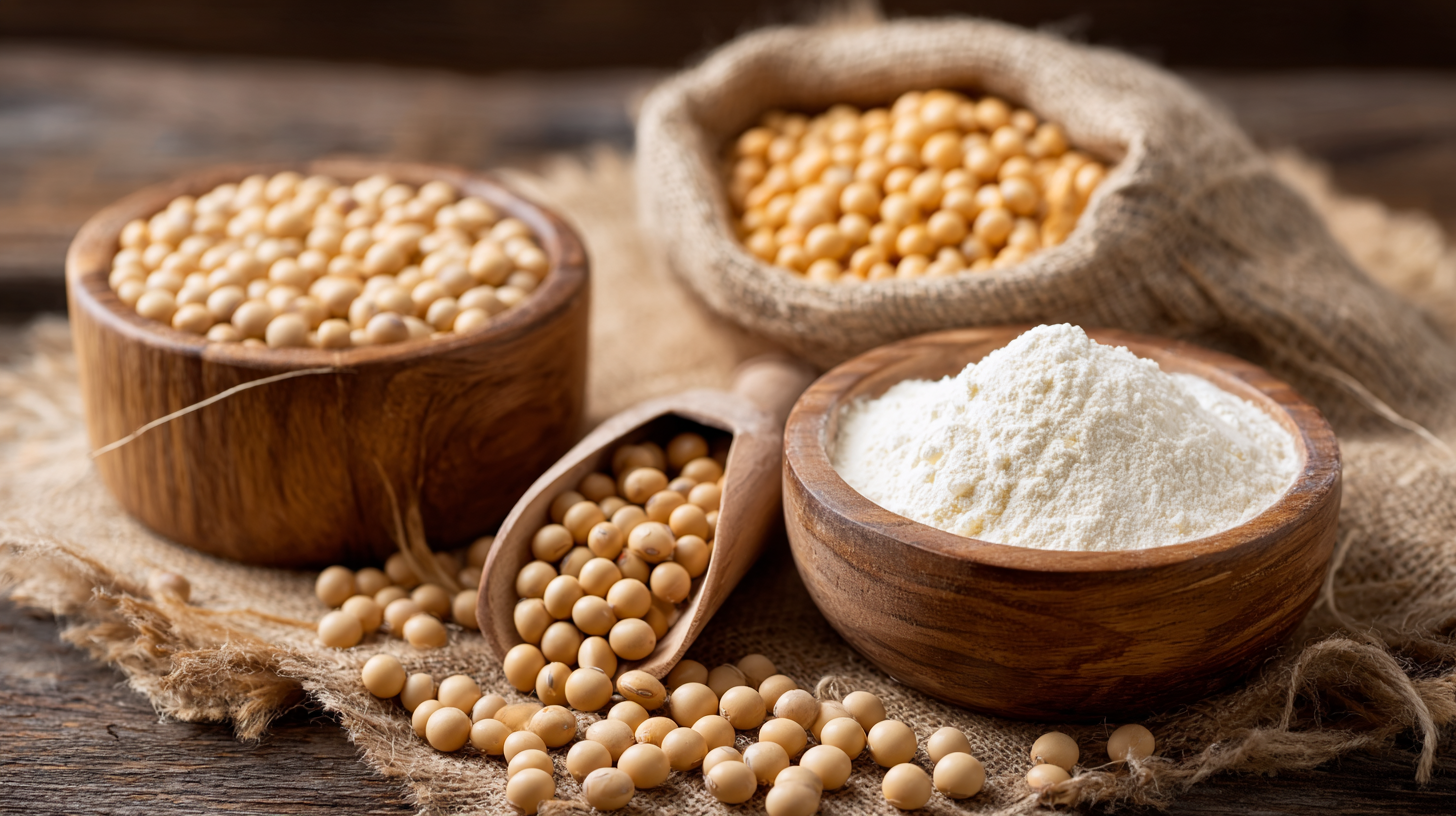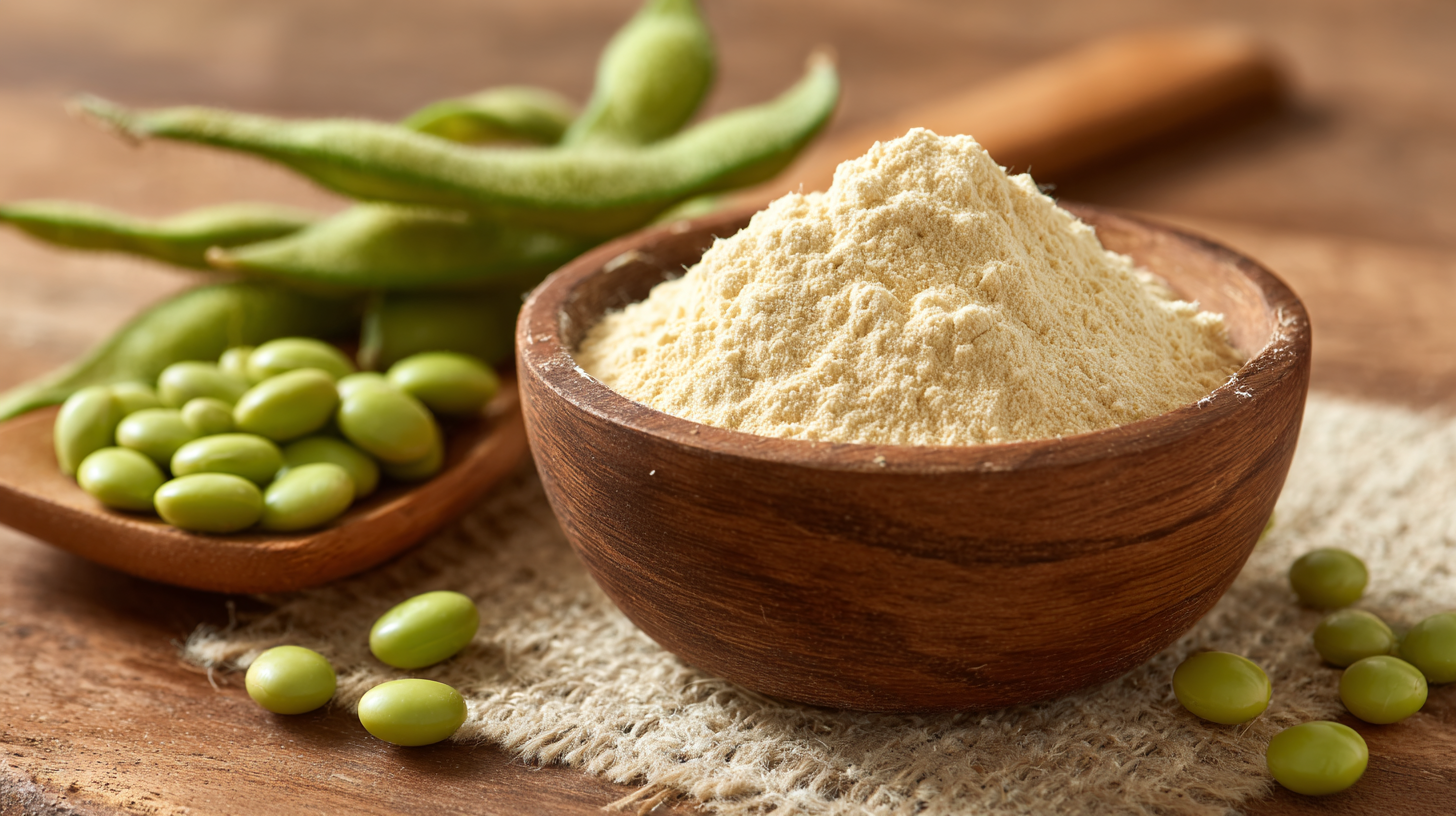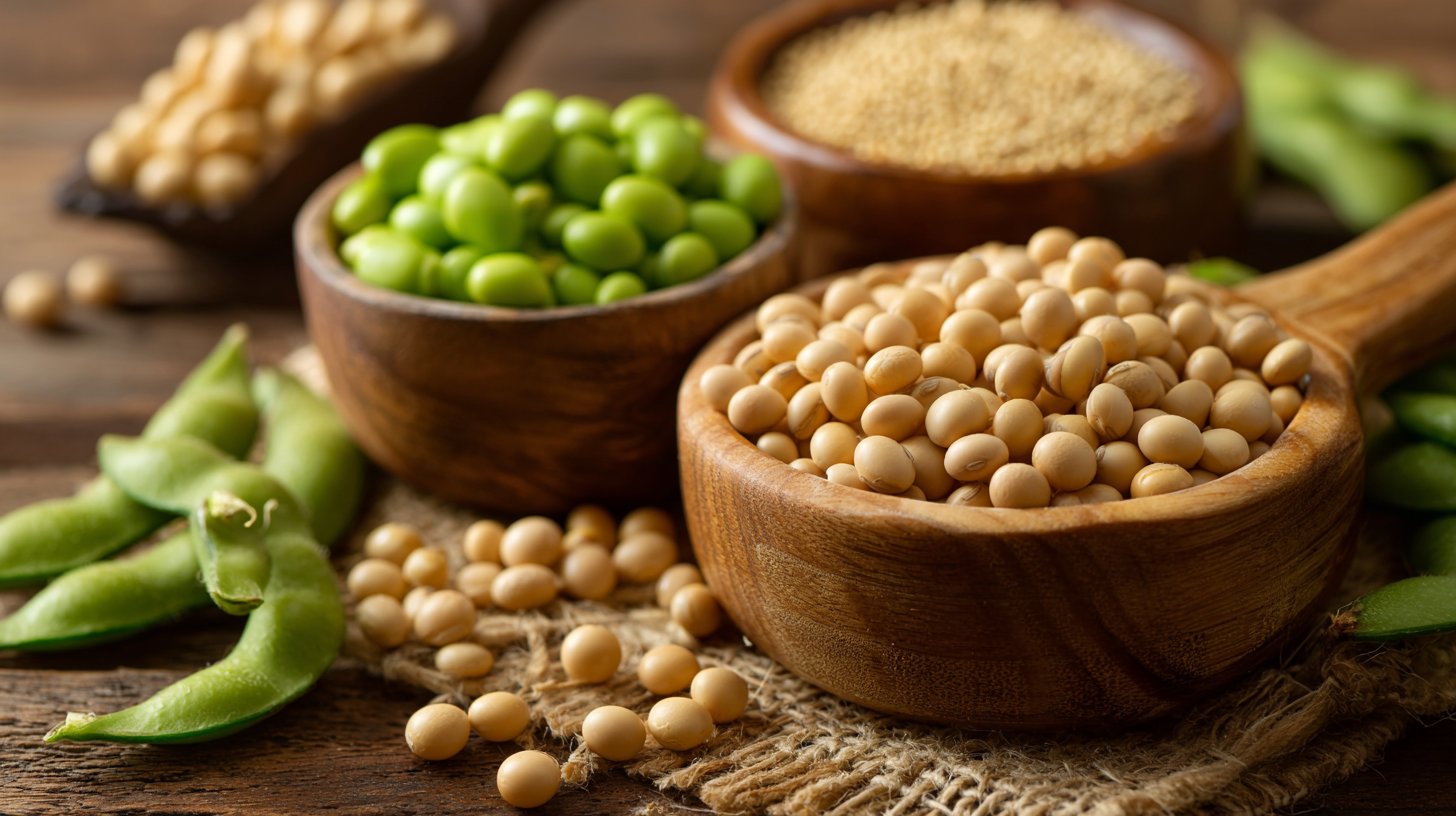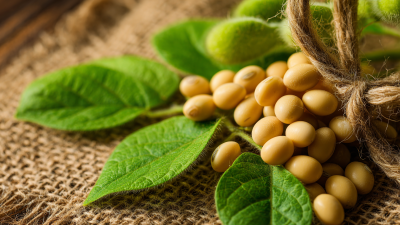Inquiry
Form loading...
Soy isoflavones, a class of phytoestrogens found abundantly in soybeans and soy products, have gained significant attention for their potential health benefits. According to a report by the American Journal of Clinical Nutrition, soy isoflavones can help alleviate menopausal symptoms and may contribute to cardiovascular health by improving lipid profiles and reducing oxidative stress. Moreover, the World Health Organization highlights that incorporating soy isoflavones into the diet can play a role in the prevention of certain chronic diseases, including breast and prostate cancer. With the increasing prevalence of soy consumption globally, it's imperative to understand how to effectively integrate soy isoflavones into our daily diets. This guide aims to provide practical insights on the best sources and methods for incorporating these compounds, thereby promoting optimal health and enhancing overall well-being.

Soy isoflavones, primarily found in soybeans and soy products, have garnered attention for their potential health benefits, particularly for hormonal balance and heart health. Research indicates that isoflavones, such as genistein and daidzein, can mimic the effects of estrogen in the body, which may help alleviate symptoms of menopause. A study published in the "Journal of Nutrition" highlighted that women consuming high amounts of soy isoflavones experienced fewer menopausal symptoms, including hot flashes, compared to those with lower intake levels.
Moreover, soy isoflavones are associated with cardiovascular benefits. According to a meta-analysis in the "American Journal of Clinical Nutrition," daily consumption of soy isoflavones can significantly lower LDL cholesterol levels. The analysis, which reviewed 25 clinical trials, found that a daily intake of 25 grams of soy protein, rich in isoflavones, reduced LDL cholesterol by up to 9%, contributing to improved heart health. Additionally, the antioxidant properties of isoflavones may help reduce inflammation, further supporting cardiovascular function and overall health. Incorporating a variety of soy foods such as tofu, tempeh, and soy milk into your diet can be a delicious way to enjoy these health benefits.

Soy isoflavones, recognized for their potential health benefits, can be easily integrated into your daily diet through a variety of soy food sources. One of the simplest ways to incorporate them is by including soy milk in your breakfast routine. Opt for unsweetened soy milk in smoothies or cereals to start your day on a healthy note. Additionally, tofu is a versatile ingredient that can be added to stir-fries, salads, or grilled dishes, providing a substantial amount of isoflavones while also contributing protein.
Edamame, young soybeans, are another fantastic option. They can be served as a snack, added to salads, or tossed into pastas for a nutritious boost. Furthermore, tempeh, a fermented soy product, not only offers isoflavones but also enhances gut health due to its probiotic content. By choosing these soy food sources, you can easily enhance your meals with the health benefits associated with soy isoflavones while enjoying a variety of delicious and nutritious dishes.

Incorporating soy isoflavones into your daily diet can be both enjoyable and beneficial for your health. One of the simplest ways to add them is by blending soy milk or silken tofu into your smoothies. You can create a creamy base while enhancing the nutritional profile of your favorite beverages. Adding fruits like bananas or berries not only masks any soy flavor but also boosts your antioxidant intake, making for a deliciously nutritious drink.
Another creative approach is to use roasted soy nuts or soy protein powder as toppings for your snacks. Sprinkle roasted soy nuts over yogurt or oatmeal for a satisfying crunch and a dose of isoflavones. Alternatively, mix soy protein powder into energy bars or protein bites for a quick and healthy snack on-the-go. These modifications not only enhance the taste and texture of your snacks but also ensure you're maximizing the health benefits associated with soy isoflavones.
| Food Item | Serving Size | Soy Isoflavones (mg) | Usage Suggestions |
|---|---|---|---|
| Soy Milk | 1 cup (240 ml) | 30-40 mg | Use in smoothies or as a base for cereals. |
| Tofu | 100 g | 20-30 mg | Add to salads or stir-fries for a protein boost. |
| Edamame | 1 cup (155 g) | 40-50 mg | Snack on steamed edamame or add to pastas. |
| Soy Nuts | 1 oz (28 g) | 40-50 mg | Enjoy as a crunchy snack or mix with trail mix. |
| Soy Protein Powder | 1 scoop (30 g) | 20-30 mg | Blend into smoothies or add to baked goods. |
Incorporating soy isoflavones into your daily diet can be a straightforward process with effective meal planning. Start by identifying a variety of soy-based foods that you enjoy, such as tofu, edamame, tempeh, and soy milk. By incorporating these into your weekly meals, you can ensure a consistent intake of isoflavones. For instance, consider starting your day with a smoothie made from soy milk blended with fruits and vegetables, or adding tofu to your salads or stir-fries for lunch and dinner.
To maintain consistency, plan your meals ahead of time. Create a weekly meal plan that includes at least one soy-based dish each day. Try to cook in batches; making larger portions of soy-based recipes can save time and provide convenient meal options throughout the week. Additionally, consider experimenting with different cuisines that incorporate soy naturally, such as Asian dishes which often highlight these ingredients. By being intentional about your meal planning, you can easily optimize your intake of soy isoflavones for better health while enjoying a variety of delicious options.
Incorporating soy isoflavones into your daily diet can significantly enhance your overall health, but several common barriers may prevent individuals from reaping their benefits. One significant hurdle is the misconception about soy's effects on hormonal health. Research published in the Journal of Nutrition highlights that soy isoflavones can positively influence hormonal balance, particularly in postmenopausal women. They contain phytoestrogens that mimic estrogen in the body, potentially alleviating symptoms of menopause such as hot flashes and bone density loss (Messina, 2016).
Another challenge is the potential allergy or intolerance some individuals may have toward soy products. According to a study by the American College of Allergy, Asthma, and Immunology, soy is one of the top eight allergens, affecting approximately 0.4% of the population. However, most people can safely consume traditional soy foods like tofu and tempeh, which are fermented and often easier to digest.
Incorporating a variety of soy products into your meals, such as edamame, soy milk, and miso, can help mitigate these barriers, allowing individuals to enjoy the numerous health benefits associated with soy isoflavones, including heart health and cancer risk reduction.






